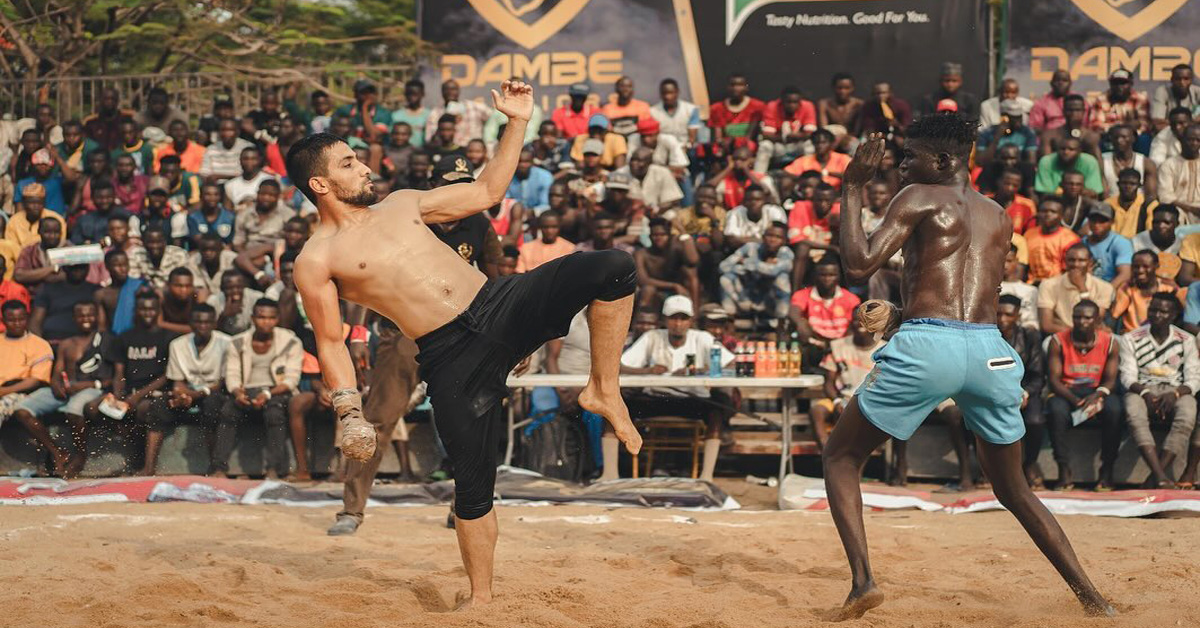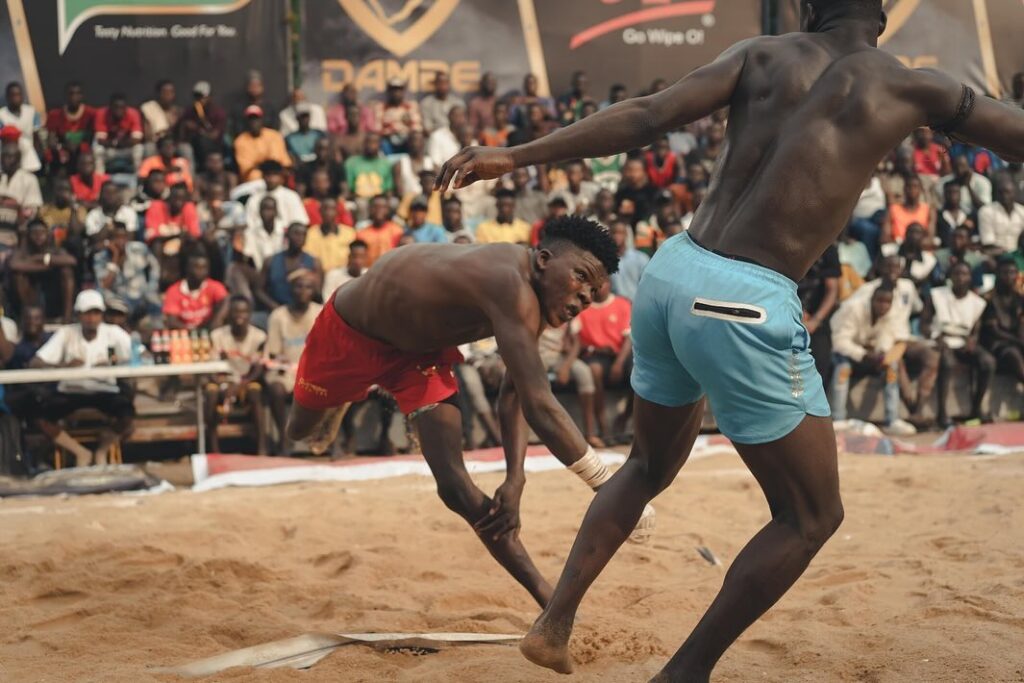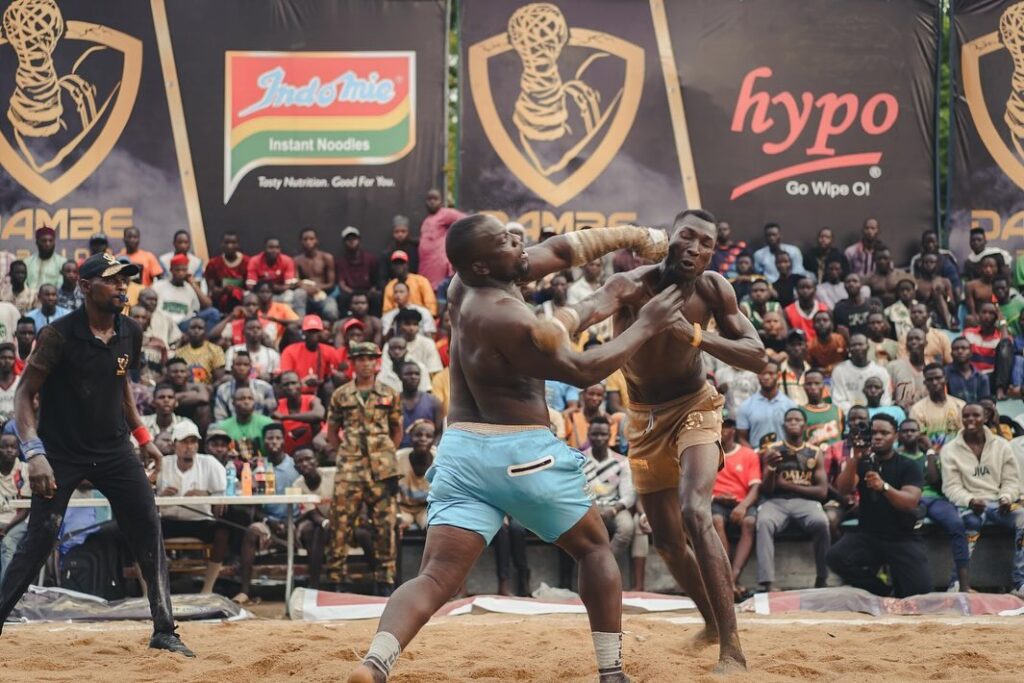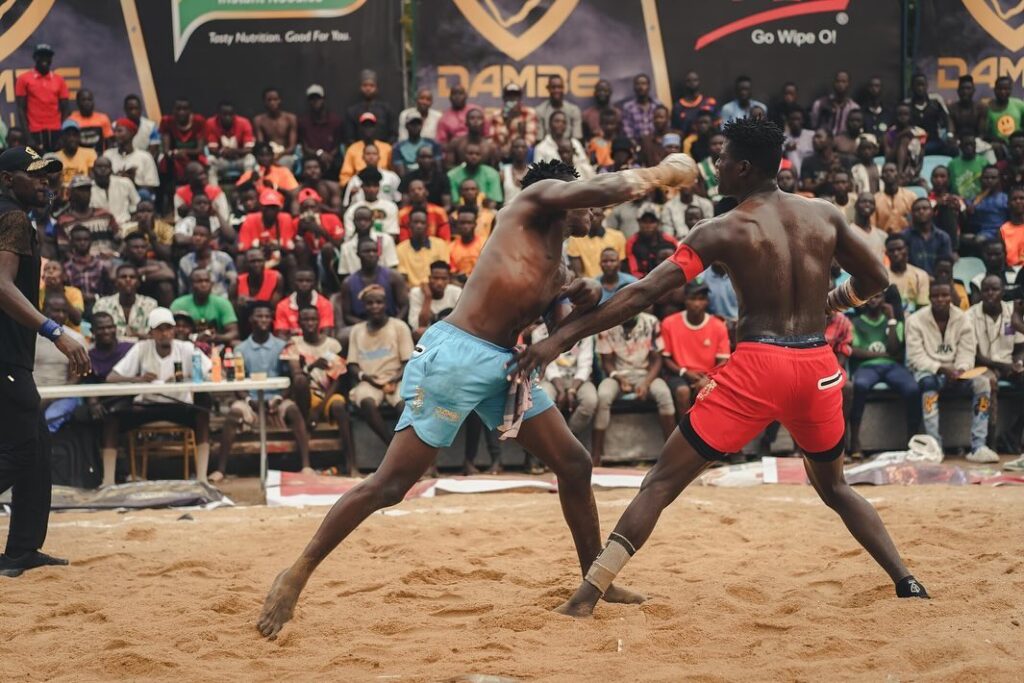Dambe: The West African Fighting Style

Within the West African region and much of Nigeria, there is a fighting style practiced known as Dambe- A violent fighting style that delivers some of the wildest knockouts that you’ll ever see.
Here is everything you need to know about the West African fighting style known as Dambe. Read below to learn everything about this style from how it was created and its rules of sport.
What is Dambe?
Dambe is a traditional martial art and combat sport that is practiced predominantly within Nigeria and West Africa. The word “Dambe” is from the Hausa language that means boxing.
Boxers in Dambe have one hand heavily clothed into the form of a club. The point of the sport is to use the club to knock the opponents out.

The History of Dambe Fighting
The history of Dambe fighting actually dates back centuries. This martial art was originally created by the Hausa people as a form of self defense.
It is said that ancient Hausa butchers were the ones who created the fighting style. The fighting style not only became the self-defense style of the people but was also culturally ingrained within Hausa communities.
Dambe was not only a fighting style, but also became a combat sport practiced by the Hausa people. These fighting events would take place in various events from cultural festivals to weddings.
As time went on, other West African people outside of the Hausa adopted the sport of Dambe. This cultural exchange has led to rivalries and enabled the traditions of Dambe to continue into the future.
The Rules of Dambe

The combat sport of Dambe is unique and has its own rulesets which sets it apart from other fighting styles. Here are the basic rules of Dambe.
- The Fighters(Boxers): Traditional Dambe matches involve two boxers that are near the same weight fighting in an open area. Some other forms of Dambe have multiple boxers fighting at once, but true Dambe is performed with two boxers.
- Equipment: The only piece of padding used in the fight is a heavily wrapped cloth around a boxer’s fist called a “Kara.” Boxers aim to strike their opponent with their Kara wrapped hand, while the free hand grapples and finds the striking range.
- Stance & Movement: Fighters stand in a wide-stance with their front hand reaching out to find the striking range. The boxers will circle each other and perform feint and stutter steps to set up their big strikes.
- Strikes: The Wrapped Hand is used to hit the opponent in the head and body to deliver a KO. Kicks to the legs and body are also allowed to set up strikes with the clubbed-hand.
- Rounds & Duration: Rounds in Dambe generally only last a few minutes each. The number of rounds vary depending on the organizers and level of competition.
- Victory: The main way of victory in Dambe is by knockout or stoppage if the referee rules a fighter cannot continue. Judges will decide the winner if there is no KO by the end of the match.
The Music and Ceremonies of Dambe Events
Going to a Dambe event is unlike any other combat sports event that you’ll attend. It has certain elements that create a great atmosphere and pumps the boxers up to fight at their best.
Drumming
Drumming is a central part of a Dambe event that keeps the rhythm and energy of the fights up. Spectators play a variety of different drums from the Hausa drums called “kalango” and “dundun” Yoruba drums.
The beats of the drums vary in intensity and tempo, mirroring the ebb and flow of the matches. Drummers often sit at the edge of the fighting areas to play and keep up the energy of fighters and spectators
Chanting & Singing
Alongside the constant drumming, spectators will be chanting and singing to the beats of the drums. Spectators and supporters will chant and sing traditional songs and slogans to encourage the fighters to fight harder.
These chants may praise the prowess of the boxers, and invoke blessings for success for the athlete they are supporting. Some other chants will simply express joy and excitement for the competition.
Dancing
Dancing is another essential element within big Dambe events. Dancers, often adorn colorful attire and traditional costumes to perform energetic and rhythmic dances around the fighting area.
Their movements are synchronized with the beats of the drums which enhances the sense of spectacle and celebration. Everyone from men, women, and children partake in the dancing at a big Dambe event.
Procession & Ceremonies
Before each fight begins, there are generally processions and ceremonies performed by the fighters and spectators. These rituals are a way to pay homage to the tradition of the sport and its people.
The processions and ceremonies at Dambe matches can include everything from prayers, formal greetings, or rituals performed by community leaders. These ceremonies help set the tone for the event and emphasize the cultural significance of the sport within the communities.
The Importance of the Rituals at Dambe Events

Overall, the combination of drumming, chanting, and singing, and dancing creates a vibrant and dynamic atmosphere. They not only entertain the audience but also serve to honor the traditions and heritage associated with the martial art.
All of this together creates a sense of camaraderie, pride, and cultural identity for the fighters and spectators.
Notable Dambe Boxers
In the long and illustrious history of Dambe, there have been some incredible boxers within the sport. Here are three of the best Dambe boxers of the modern era.
- Kyari Gaijiram: Kyari Gaijiram is known as one of the greatest Dambe fighters of all-time. He is renowned for his incredible skill, speed, and powerful striking power, which earned him international recognition.
- Tiger Abu Azeez: Tiger Abu Azeez is considered one of the legends of the Dambe community. During his time as a boxer, Azeez used his aggressive fighting style to win multiple championships.
- Ali Tijani: Tjani is known for being one of the sport’s best tacticians, who used his skill and versatility to win many titles.
What’s the Future of Dambe?
In recent years, the combat sport of Dambe has experienced a resurgence of popularity thanks to the internet and social media. It has not only gained more popularity within Nigeria, but people all over the world are now seeing Dambe fights.
Because of this exposure, more organized Dambe events are being held regularly and attracting more students of the sport. Today, Dambe continues to be practiced and celebrated as a symbol of strength, tradition, and community within West Africa and beyond.






